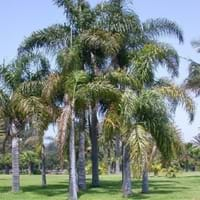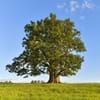Life Span
Perennial
Perennial
Origin
United States, California
Asia, Europe, North America
Types
Not Available
Black Ash, Blue Ash, California Ash, Carolina Ash, European Ash
Number of Varieties
Not Available
Habitat
Semi desert, Subtropical climates
Forest edges, Hillside, Woods
USDA Hardiness Zone
7-9
3-9
Sunset Zone
3b, 4, 5, 6, 7, 8, 9, 11, 12, 13, 14, 15, 16, 17, 18, 19, 20, 21, 22, 23, 24
9, 12, 13, 14, 15, 16, 17, 18, 19, 20, 21, 22, 23, 24
Habit
Spreading
Oval or Rounded
Flower Color
Red, Yellow green
White
Flower Color Modifier
Bicolor
Not Available
Fruit Color
Sienna, Chocolate
Not Available
Leaf Color in Spring
Green
Dark Green
Leaf Color in Summer
Dark Green
Dark Green
Leaf Color in Fall
Yellow, Yellow green, Gold
Dark Green
Leaf Color in Winter
Not Available
Dark Green
Leaf Shape
Irregular
Oblovate
Plant Season
Spring, Summer, Fall, Winter
All year
Sunlight
Full Sun, Partial Sun
Full Sun, Part sun
Type of Soil
Clay, Loam
Loamy, Sandy
The pH of Soil
Acidic, Neutral, Alkaline
Acidic
Soil Drainage
Average
Well drained
Bloom Time
Spring
Late Spring, Spring
Tolerances
Drought
Drought, Pollution, Soil Compaction
Where to Plant?
Ground
Ground
How to Plant?
Seedlings, Stem Planting
Grafting, Seedlings, Stem Planting, Transplanting
Plant Maintenance
Medium
Medium
Watering Requirements
Form a Soil ring to water efficiently, Keep ground moist, Requires watering in the growing season, Water more in summer, Water when soil is dry
Does not require lot of watering, Medium, Prefer drip-irrigation instead of Over-head watering
In Summer
Lots of watering
Lots of watering
In Spring
Moderate
Moderate
In Winter
Average Water
Average Water
Soil pH
Acidic, Neutral, Alkaline
Acidic
Soil Type
Clay, Loam
Loamy, Sandy
Soil Drainage Capacity
Average
Well drained
Sun Exposure
Full Sun, Partial Sun
Full Sun, Part sun
Pruning
Don't prune in winter, No pruning needed in the early stages, Prune if you want to improve plant shape, Remove deadheads
Prune in winter, Prune prior to new growth
Fertilizers
All-Purpose Liquid Fertilizer
All-Purpose Liquid Fertilizer
Pests and Diseases
Fungal Diseases
Bark splits, Crown gall, Epicormic Sprouting, Woodpecker feeding
Plant Tolerance
Drought
Drought
Flowers
Insignificant
Yes
Flower Petal Number
Not Available
Single
Foliage Texture
Medium
Medium
Foliage Sheen
Glossy
Glossy
Allergy
no allergic reactions
Not Available
Aesthetic Uses
Not Used For Aesthetic Purpose
Not Used For Aesthetic Purpose
Beauty Benefits
Not Available
Not Available
Environmental Uses
Air purification
Air purification
Medicinal Uses
No Medicinal Use
Fever, Liver problems
Part of Plant Used
Bark, Leaves, Wood
Leaves, Stem
Other Uses
Cattle Fodder, Used by tanners in tanning leather, Used in making musical instruments, Wood is used for making furniture, Wood is used for ship building, Wood is used in construction
Used as Ornamental plant
Used As Indoor Plant
No
No
Used As Outdoor Plant
Yes
Yes
Garden Design
Feature Plant, Shade Trees
Shady Tree, Showy Tree
Botanical Name
QUERCUS lobata
Fraxinus
Common Name
California Swamp Oak, California White Oak, Roble Oak, Valley Oak
Ash Tree
In Hindi
घाटी ओक
राख पेड़
In German
Tal Eiche
Esche
In French
Oak Valley
Frêne
In Spanish
valle del roble
Fresno
In Greek
Valley Oak
δέντρο Ash
In Portuguese
vale Oak
Freixo
In Polish
Dolina Oak
Jesion
In Latin
Oak vallis
Fraxinum
Phylum
Not Available
Anthophyta
Class
Not Available
Magnoliopsida
Clade
Angiosperms, Eudicots, Rosids
Angiosperms, Asterids, Eudicots
Tribe
Not Available
Oleeae
Subfamily
Not Available
Not Available
Importance of Valley Oak and Ash Tree
Want to have the most appropriate plant for your garden? You might want to know the importance of Valley Oak and Ash Tree. Basically, these two plants vary in many aspects. Compare Valley Oak and Ash Tree as they differ in many characteristics such as their life, care, benefits, facts, etc. Every gardener must at least have the slightest clue about the plants he wants to plant in his garden. Compare their benefits, which differ in many ways like facts and uses. The medicinal use of Valley Oak is No Medicinal Use whereas of Ash Tree is Fever and Liver problems. Valley Oak has beauty benefits as follows: Not Available while Ash Tree has beauty benefits as follows: Not Available.
Compare Facts of Valley Oak vs Ash Tree
How to choose the best garden plant for your garden depending upon its facts? Here garden plant comparison will help you to solve this query. Compare the facts of Valley Oak vs Ash Tree and know which one to choose. As garden plants have benefits and other uses, allergy is also a major drawback of plants for some people. Allergic reactions of Valley Oak are no allergic reactions whereas of Ash Tree have Not Available respectively. Having a fruit bearing plant in your garden can be a plus point of your garden. Valley Oak has showy fruits and Ash Tree has no showy fruits. Also Valley Oak is not flowering and Ash Tree is flowering. You can compare Valley Oak and Ash Tree facts and facts of other plants too.





